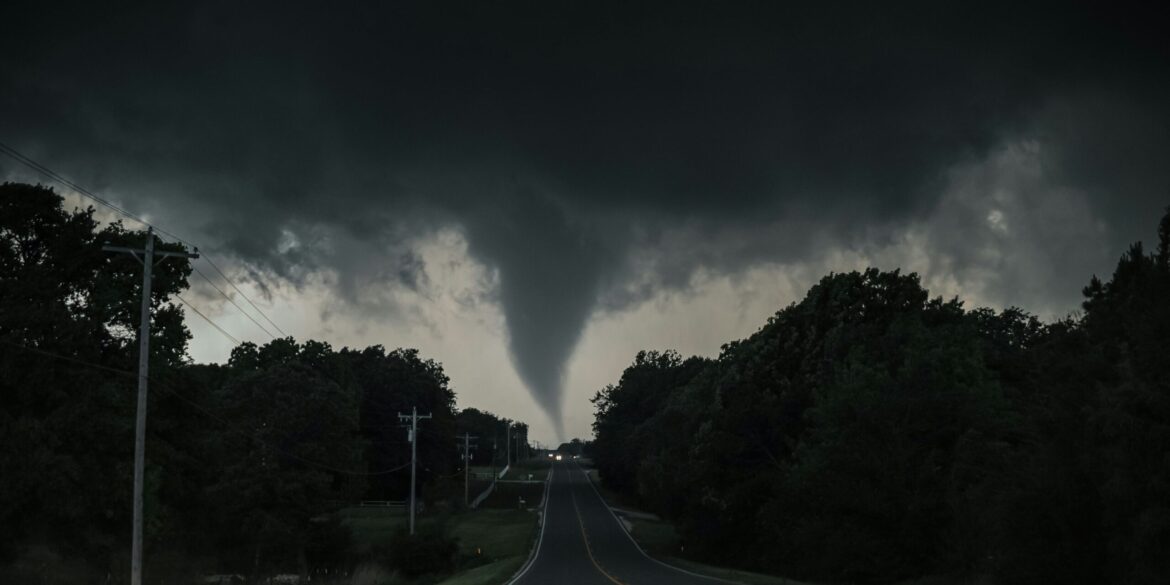A devastating tornado outbreak on May 15 and 16, 2025, has wreaked havoc across parts of the central and southeastern United States, leaving at least 31 people dead and causing significant property damage. The violent storms, which included multiple EF3 tornadoes, hit Kentucky, Missouri, and Illinois particularly hard, leaving communities in ruin and emergency services scrambling to respond to the widespread destruction. As recovery efforts continue, the National Weather Service (NWS) has issued severe weather warnings for other areas, urging residents to remain vigilant as the tornado season progresses.
The Deadliest Tornado Outbreak in Recent Years
The tornado outbreak, which spanned over two days, began on May 15, when severe thunderstorms erupted across the central U.S. The storms quickly intensified, spawning multiple tornadoes, including several that reached EF3 strength. These tornadoes, which have winds ranging between 136-165 mph, tore through several counties in Kentucky, Missouri, and Illinois, causing massive destruction in their wake.
In Kentucky, the hardest-hit areas included Pulaski and Laurel counties, where at least 24 fatalities were reported. Pulaski County, in particular, saw entire neighborhoods flattened, and local authorities have reported numerous injuries in addition to the confirmed deaths. The damage to homes, businesses, and infrastructure is extensive, with emergency response teams working tirelessly to search for survivors and assist those affected by the disaster.
Missouri, especially around the St. Louis area, also suffered considerable damage from the outbreak. The city of St. Louis declared a state of emergency as the tornadoes tore through residential neighborhoods and industrial areas, leaving behind debris and downed power lines. The storm system caused widespread flooding as well, complicating efforts for rescue teams trying to reach those trapped or stranded.
Illinois, particularly southern Illinois, faced similar destruction, with numerous towns left without power or essential services. The tornadoes that struck these areas left behind scenes of devastation, with many homes reduced to rubble and businesses destroyed. Local officials have been working with the Federal Emergency Management Agency (FEMA) and state agencies to provide temporary shelter and aid to displaced residents.
The Impact on Power and Infrastructure
One of the most significant challenges from the tornado outbreak has been the widespread power outages. Over 600,000 people in the affected regions, including a large portion of the St. Louis metro area, were left without electricity due to downed power lines and damaged infrastructure. Emergency crews have been working around the clock to restore power, but officials have warned that some areas could be without electricity for days or even weeks.
The extensive damage to infrastructure has also delayed recovery efforts. Highways and roads in many affected areas are impassable due to debris, making it difficult for first responders to reach remote communities. In Pulaski and Laurel counties, where entire neighborhoods were flattened, the cleanup and rebuilding process is expected to take months, if not longer.
The loss of utilities has also made it difficult for residents to access basic necessities such as clean water, food, and medical care. Local authorities have been coordinating with FEMA and other organizations to provide emergency shelters, food, water, and medical supplies to affected individuals. Despite these efforts, the sheer scale of the damage has left many communities struggling to cope with the aftermath.
Ongoing Recovery and Rescue Efforts
As of May 18, 2025, emergency response teams, including local firefighters, police officers, and search-and-rescue teams, are still working to locate survivors and provide assistance to those who have lost everything in the storm. FEMA has deployed personnel to the hardest-hit areas, and the agency has promised financial assistance for those whose homes and businesses were destroyed.
In addition to the official response teams, local volunteer groups have mobilized to assist with recovery efforts. Many of the volunteers have been helping with search-and-rescue operations, while others have been providing food, clothing, and shelter to displaced individuals. Community organizations and churches have played a critical role in offering emotional and spiritual support to residents who have lost loved ones or been left homeless by the tornadoes.
The NWS continues to monitor the situation, issuing weather alerts for other regions that may be at risk for similar storms in the coming days. Meteorologists are urging people in tornado-prone areas to remain alert and prepared for the possibility of more severe weather in the weeks ahead.
State of Emergency and Federal Aid
In the wake of the widespread devastation, Kentucky Governor Andy Beshear and Missouri Governor Mike Parson declared states of emergency, enabling both states to access federal disaster relief funds. President Joe Biden has expressed his condolences for the victims of the storm and has pledged full federal support for recovery efforts. “We stand with the people of Kentucky, Missouri, Illinois, and all affected areas,” Biden said in a statement. “Our government will provide all the resources necessary to rebuild and recover from this tragedy.”
The declaration of a state of emergency in St. Louis allowed local authorities to tap into additional resources for both short-term relief and long-term recovery. State officials have also urged the federal government to expedite aid and support for affected communities. FEMA has started distributing disaster relief funds, which will help provide grants for temporary housing, emergency medical services, and home repairs.
The Role of Technology and Weather Prediction
One of the key factors in mitigating the damage from this tornado outbreak was the early warning system provided by the National Weather Service and local meteorologists. Alerts for severe weather were issued hours before the tornadoes struck, giving residents time to take shelter and prepare for the worst. The use of advanced radar technology and real-time weather monitoring allowed authorities to track the storms as they developed and issued timely warnings.
However, despite the advanced technology, the destructive nature of these tornadoes highlights the need for continued investment in both weather forecasting and disaster response systems. As extreme weather events become more frequent and intense due to climate change, ensuring that communities have the resources to prepare for and respond to such disasters is more important than ever.
Looking Ahead: Rebuilding After the Tornado Outbreak
In the coming months, recovery efforts will focus on restoring essential services, rebuilding homes, and providing support to those who have lost loved ones or their livelihoods. The tornado outbreak of May 2025 will likely remain in the memories of those who lived through it, but it also serves as a reminder of the importance of preparedness and resilience in the face of nature’s unpredictable power.
For further updates on recovery efforts and tornado safety, visit FEMA.

